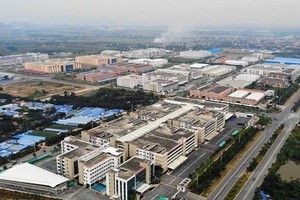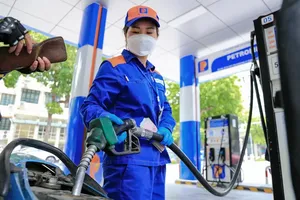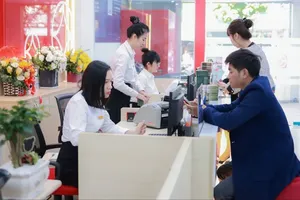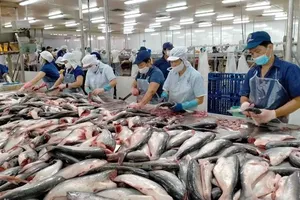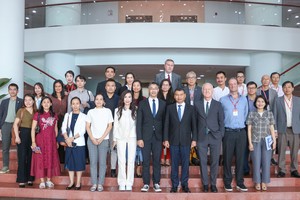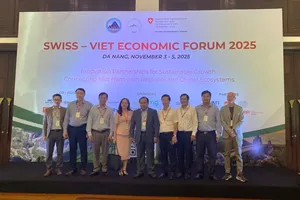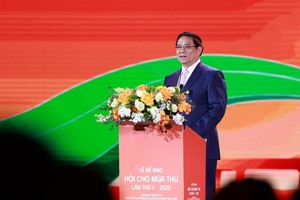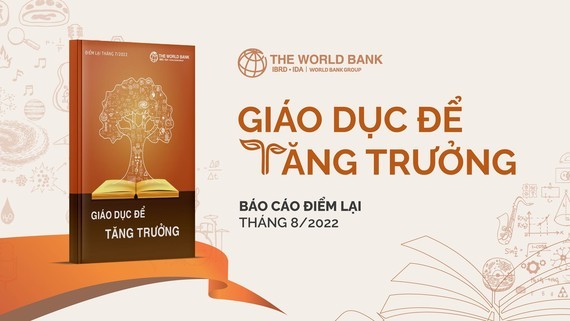
According to the report, despite the challenging global economic environment, the outlook for the Vietnamese economy is still favorable according to the baseline forecast. Due to the impact of the low starting point, GDP is expected to grow by 7.5 percent in 2022 and 6.7 percent in 2023, when growth returns to pre-pandemic levels at 6.5-7 percent.
Meanwhile, the average inflation is expected to fall around 3.8 percent in 2022, with the rising trend continuing in the second half of 2022. “The fuel price shock is expected to dissipate in 2023, but the second round of spillover effect continues to happen, and the forecasted GDP growth rate of 6.7 percent for the year will cause CPI to increase to 4 percent in 2023 before dropping to 3.3 percent in 2024,” the report said.
According to WB experts, with travel restrictions lifted and international tourists gradually returning, the service sector has been recovering strongly. Export growth of manufactured and processed industrial products is forecast to slow down in the short term as global demand weakens. However, stronger-than-expected domestic consumption will make up for slowing down external demand, similar to the 2016-2019 growth trend.
The economic recovery in 2022 will continue to benefit from the loose monetary policy and the 2022-2023 Economic Development and Recovery Program.
Although inflation has, so far, appeared to be largely driven by external supply factors, persistently rising prices could drive inflationary expectations higher, weighing on destabilizing pressures on nominal wages and production costs. From a demand perspective, increased domestic demand, especially as consumption continues to recover, could increase pressure on prices.
In the context that the domestic recovery process has not been completed, and global demand is expected to be weak, supportive fiscal policy is the way to hedge risks to economic growth. Although Vietnam has fiscal space to carry out, the challenge lies in weaknesses in the implementation.
As core inflation remains under control and the economy remains below the potential level, loose monetary policy is considered still appropriate for the time being. However, if the risk of increased inflation becomes a reality - when core inflation accelerates and total inflation exceeds the Government's target of 4 percent, the State Bank of Vietnam should be ready to switch to monetary tightening to curtail inflation pressure by raising interest rates and tightening the money supply.
Those steps, combined with clear and predictive communication measures about monetary policy decisions, are ways to help guide market participants while ensuring inflation expectations are nailed.
Meanwhile, the average inflation is expected to fall around 3.8 percent in 2022, with the rising trend continuing in the second half of 2022. “The fuel price shock is expected to dissipate in 2023, but the second round of spillover effect continues to happen, and the forecasted GDP growth rate of 6.7 percent for the year will cause CPI to increase to 4 percent in 2023 before dropping to 3.3 percent in 2024,” the report said.
According to WB experts, with travel restrictions lifted and international tourists gradually returning, the service sector has been recovering strongly. Export growth of manufactured and processed industrial products is forecast to slow down in the short term as global demand weakens. However, stronger-than-expected domestic consumption will make up for slowing down external demand, similar to the 2016-2019 growth trend.
The economic recovery in 2022 will continue to benefit from the loose monetary policy and the 2022-2023 Economic Development and Recovery Program.
Although inflation has, so far, appeared to be largely driven by external supply factors, persistently rising prices could drive inflationary expectations higher, weighing on destabilizing pressures on nominal wages and production costs. From a demand perspective, increased domestic demand, especially as consumption continues to recover, could increase pressure on prices.
In the context that the domestic recovery process has not been completed, and global demand is expected to be weak, supportive fiscal policy is the way to hedge risks to economic growth. Although Vietnam has fiscal space to carry out, the challenge lies in weaknesses in the implementation.
As core inflation remains under control and the economy remains below the potential level, loose monetary policy is considered still appropriate for the time being. However, if the risk of increased inflation becomes a reality - when core inflation accelerates and total inflation exceeds the Government's target of 4 percent, the State Bank of Vietnam should be ready to switch to monetary tightening to curtail inflation pressure by raising interest rates and tightening the money supply.
Those steps, combined with clear and predictive communication measures about monetary policy decisions, are ways to help guide market participants while ensuring inflation expectations are nailed.


